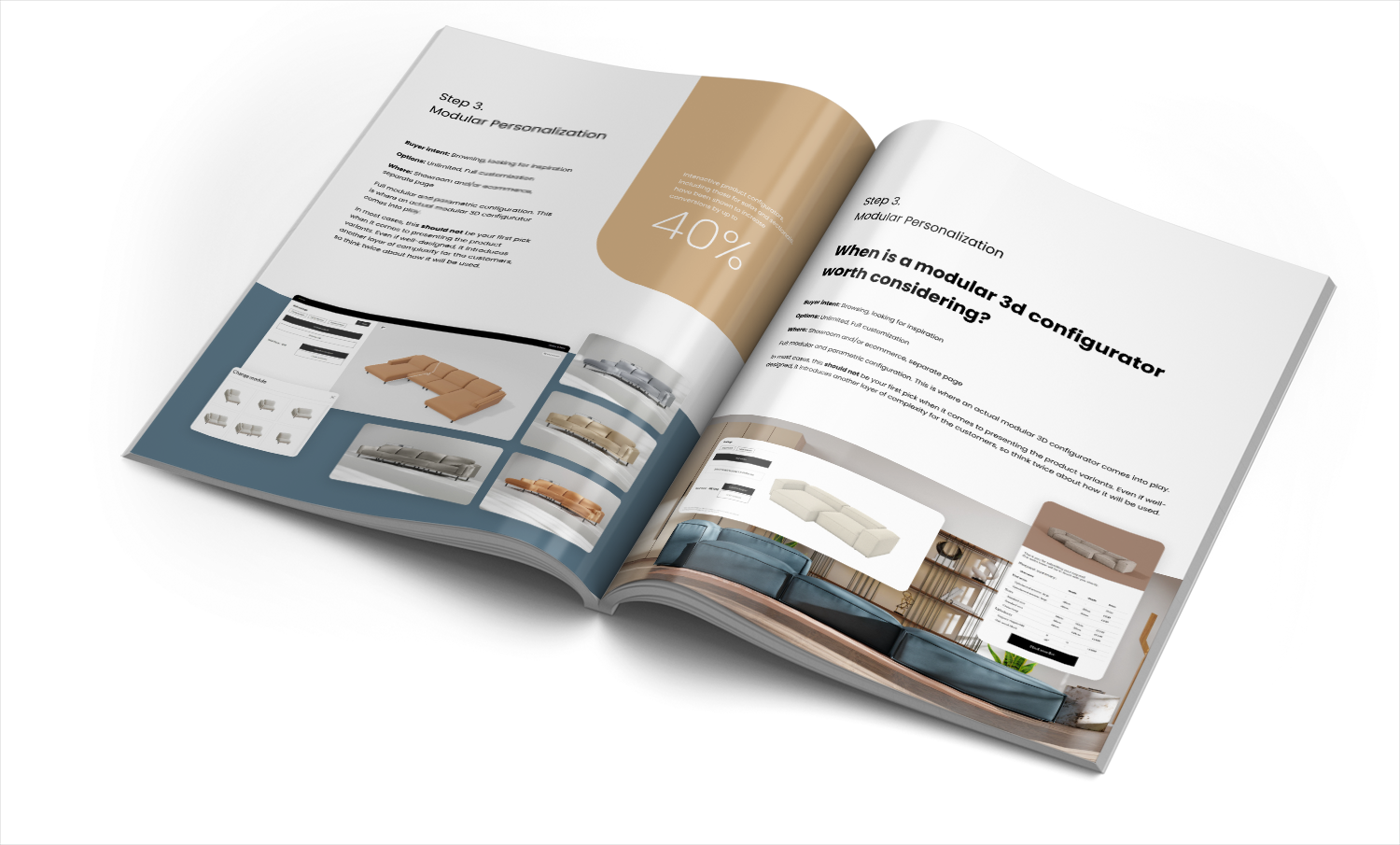The Ultimate 2025 Sofa Configuration Guide
Get your free copy todayy!

For many B2B furniture makers, shifting into the world of B2C furniture feels like stepping onto a different planet. The same tables, chairs, and sofas are still there, but the customers play by a new set of rules. In B2B, selling meant technical specs, volume discounts, and lead times. In B2C, it means selling a lifestyle – a feeling of what it’s like to live with that piece of furniture.
The biggest change? You’re no longer selling a product listing. You’re selling a vision. And that vision needs storytelling, visualization, and emotion to connect with buyers who think with their hearts before their wallets.
B2B sales strategies are built on logic. They revolve around bulk orders, procurement contracts, and precise specifications. But in the consumer world, people buy what resonates emotionally. These old traditional sales habits fail when faced with consumers looking for inspiration rather than data sheets.
Here’s why many B2B brands trip up:
Research shows that brands that fail to personalize or visualize effectively suffer from low online conversion rates. When shoppers can’t picture themselves using your product, they simply don’t buy.
In the world of B2C furniture, purchases often begin as dreams. The buyer finds inspiration in a photo or lifestyle story, not in a SKU. They buy a vision of how life feels with that product - a family dinner, a cozy Sunday morning, a stylish studio.
That’s why selling a vision isn’t optional. Furniture companies that communicate a consistent story across all channels create stronger emotional bonds. Personalization, too, should live within your brand’s DNA - not hidden behind a lonely “Configurator” tab. It should appear naturally on the product page, showing curated variants that reflect real living scenarios before inviting the user to go deeper.
For a structured approach to embedding this thinking into your brand, explore Personalization strategy for furniture brands, which breaks down personalization into three levels: simple visual variants, guided customization, and full personalization.
Digital tools make vision-selling tangible. The combination of AR tools, 3D configurators, and data-driven engagement transforms the browsing experience into something playful, confident, and emotionally rewarding.
Modern tech allows shoppers to:
A powerful example is our 3D configurator for shelving system, which enabled customers to customize shelving layouts visually. The result? Faster quote generation and a 20–40% uplift in conversion compared to static photos.
This layered logic helps ensure clarity over complexity. People don’t want millions of options; they want the right one.
For guidance on selecting the right digital tools, check The 4 Real Types of Furniture Configurators. It walks through configurator archetypes and when to use each for different stages of the buying journey.
Even the most stunning visuals won’t convert without a smooth process behind them. Successful B2C furniture brands create a seamless online experience that feels human, connected, and coherent.
Top-performing brands integrate their e-commerce platforms with real-time product data, combining pricing, stock, and visuals in one flow. This approach prevents “customer leakage” between discovery, customization, and checkout. A connected experience means users can start customizing on a tablet, continue later on their phone, and visit a store to see the same configuration rendered on a display.
Best-in-class systems use a Single Source of Truth and a Digital Experience Platform, as described in these Guidelines for B2B-to-B2C transition and single source of truth + DXPlatform. This ensures content, visuals, and prices are always consistent, both online and offline.
Switching from B2B to B2C furniture isn’t just a sales channel tweak - it’s a transformation in mindset. You’re no longer shifting inventory; you’re building trust and aspiration.
The winning path combines personalization, engaging technology, and consistent storytelling. It leads to measurable outcomes: higher order values, reduced decision anxiety, and stronger consumer trust.
Start with one question: Are we selling a chair, or are we showing people what their life looks like with it? The brands that answer that right will define the next decade of B2C furniture success.